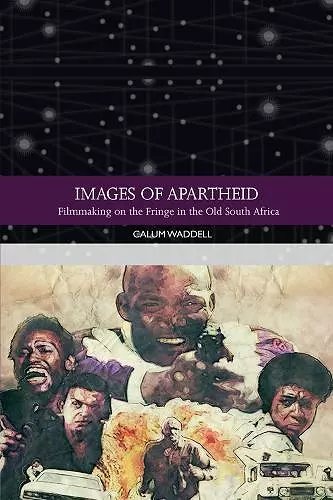Images of Apartheid
Filmmaking on the Fringe in the Old South Africa
Format:Paperback
Publisher:Edinburgh University Press
Published:17th Jul '23
Should be back in stock very soon

Images of Apartheid: Filmmaking on the Fringe in the Old South Africa is an exploration of the low budget, black-action cinema that emerged in South Africa during the 1970s and led to subsequent gangster and race-conflict films that defined an era of prolific genre activity, from Joe Bullet (1973) to American Ninja 4 (1990). Contextualising and documenting the cheap, government-funded ‘B-Scheme’ films, largely unseen since the fall of the National Party, but also acknowledging the impact of international co-productions such as The Wild Geese (1978) and locally made provocation, including the classic Mapantsula (1988), this study is an exhaustive tour of race-representation and state-subsidised subversion. Also discussing the political turbulence of the era, Images of Apartheid argues that so-called ‘ZAxploitation’ should be considered within both localised and wider international paracinematic networks of genre adaptation, resulting in the identification of a uniquely South African form of trash and treasure, and schlock and awe.
Waddell examines South African (or B-scheme films), i.e., the country's iteration of Hollywood blaxploitation. ZAxploitation cinema was surreptitiously tainted by the apartheid ideological undertones because it was supported by the National Party regime, which provided financial underwriting in the background. These low-budget exploitation films reimagined Black lives in a modernized (rural and urbanized) context. Waddell's book is in conversation with Ken Harrow’s Trash: African Cinema from Below (2013) and Tomaselli’s Encountering Modernity: Twentieth Century South African Cinema (2006). Summing Up: Recommended. Lower-division undergraduates through faculty. -- K. M. Kapanga * CHOICE *
Waddell examines South African (or B-scheme films), i.e., the country's iteration of Hollywood blaxploitation. ZAxploitation cinema was surreptitiously tainted by the apartheid ideological undertones because it was supported by the National Party regime, which provided financial underwriting in the background. These low-budget exploitation films reimagined Black lives in a modernized (rural and urbanized) context. Waddell's book is in conversation with Ken Harrow’s Trash: African Cinema from Below (2013) and Tomaselli’s Encountering Modernity: Twentieth Century South African Cinema (2006). Summing Up: Recommended. Lower-division undergraduates through faculty. * CHOICE *
Images of Apartheid is a game changer, offering next generation analysis. Waddell’s fresh, supremely nuanced eye upends inherited assumptions and overturns received analytical frameworks. He provides new ways of making sense of ‘fringe’ sectors of South African cinema watched by many but ignored or inappropriately judged by most scholars of South African films. Crucially, Waddell’s research is based on intense viewing of the films discussed, dredged up from dusty vaults. He interviews their makers, and he offers an intelligent reading of South African generated scholarly literature. Moreover, this is an easy book to read, compelling and wonderfully engaging. * Keyan G. Tomaselli, author of The Cinema of Apartheid and Encountering Modernity *
Waddell fills a gap in global cinematic histories by illustrating Blaxploitation cinema’s influence on South Africa’s oft-overlooked Zaxploitation films. Thoroughly researched, this book demonstrates how Zaxploitation filmmakers were at times able to create critical cinematic interventions that challenged the apartheid status quo. A must read for cinema and cultural scholars. * Novotny Lawrence, Iowa State University *
ISBN: 9781474450034
Dimensions: unknown
Weight: unknown
192 pages